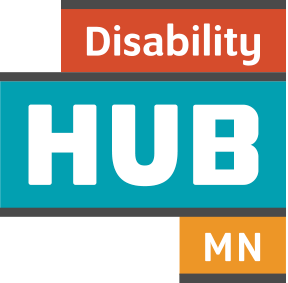Housing Toolkit:
Resources and tools
Explore links to tools and activities that will help you support people in their housing journey.
The collections below provide hands-on tools you can use in your conversations about housing, from thinking about housing options to making housing plans and searching for housing.
-
My Vault, a shared tool of Disability Hub MN, Housing Benefits 101 and Disability Benefits 101, features interactive paths and activities to help people with disabilities explore housing options and develop housing plans. People work their way through the following paths:
- Path 1: I get to decide. Learn about housing rights, plus how to start a housing plan and build a housing team.
- Path 2: Housing budget. Look at income and expenses to see what you can afford and explore ways to pay for housing.
- Path 3: Present myself. Learn to put your best foot forward and make a good impression.
- Path 4: Housing needs and wants. Explore what you want in a new place, including accessibility and service needs and wants.
- Path 5: My day, my life. Develop a plan to live independently.
- Path 6: Live with someone. Consider how a roommate could support independent living and whether a roommate makes sense.
- Path 7: Housing sustaining plan. Develop a housing sustaining plan to keep your place.
- Path 8: Write a letter. Write a letter to request reasonable accommodation, request an appeal, or explain what happened.
Learn more about My Vault's paths to help people plan for housing »
-
- My Vault. My Vault features interactive paths and activities to help people with disabilities explore housing options and develop housing plans. My Vault is a shared service of Disability Hub MN, Housing Benefits 101 and Disability Benefits 101.
- Community Support Plan (CSP)/Coordinated Services and Support Plan (CSSP). The Community Support Plan follows all MnCHOICES assessments, setting a foundation for assessors to identify and capture supports and services. The Coordinated Services and Support Plan follows a MnCHOICES assessment when the person has a waiver, Alternative Care, Consumer Support Grant, PCA services, Essential Community Supports or Moving Home Minnesota. Learn more about when to use the CSP/CSSP.
- An Individualized Education Program (IEP). An IEP is a process and documented plan to help youth who receive special education services transition from school to independence and adulthood. IEPs are required under the federal Individuals with Disabilities Education Act. They address important life plans and goals, including housing and employment. The IEP team — which typically includes the student, parents or guardians, special education teacher, regular education teacher (if the student spends time in regular education) and a representative from the school district administration — meets at least once a year. Once the IEP is in place, it can be shared with others who might help the student outside of school, such as a county case manager.
- Person-centered housing plan. As part of a broader person-centered plan, a person-centered housing plan specifically addresses housing. The plan is a critical component of the Housing Stabilization Services funded by Medical Assistance. The paths and activities in the Housing Benefits 101 Vault can be used to create a person-centered housing plan.
-
You can use many different resources to search for housing for people with disabilities. Check out this handy chart on affordable housing search tools (PDF) to find the right resources for the people you support.
-
Housing Benefits 101 hosts a number of recorded training sessions on housing-related topics such as:
- Evictions
- Hoarding
- Housing support
- Housing stabilization services
To see presentation slides or watch recorded sessions, check this archive of past housing best practice forums.
